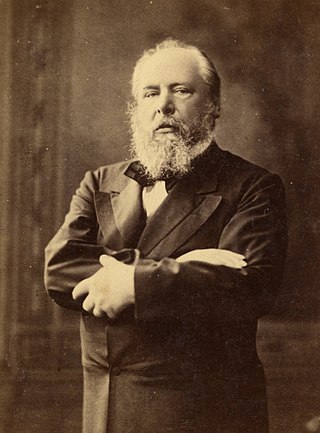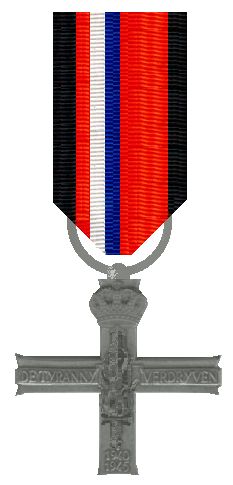
Leiden University is a public research university in Leiden, Netherlands. It was founded as a Protestant university in 1575 by William, Prince of Orange, making it the oldest institution of higher education in the Netherlands.

Willem-Alexander is King of the Netherlands, having acceded to the throne following his mother's abdication in 2013.

William III was King of the Netherlands and Grand Duke of Luxembourg from 1849 until his death in 1890. He was also the Duke of Limburg from 1849 until the abolition of the duchy in 1866.

Prince of Orange is a title originally associated with the sovereign Principality of Orange, in what is now southern France and subsequently held by sovereigns in the Netherlands.

King of the Netherlands is the title of the Dutch head of state, which includes the constituent nations of the Netherlands, Curaçao, Aruba, and Sint Maarten. The king is also the president of the Council of State.
De Grootste Nederlander was a public poll held in 2004 by the broadcasting company KRO of the Publieke Omroep. The series has the BBC's 100 Greatest Britons TV format. During the series, it included individual programmes on the top ten, with viewers having further opportunities to vote after each programme.
Thekla Simona Gelsomina Reuten is a Dutch actress.

Dick Hein "Derek" de Lint is a Dutch film and television actor, known for playing the role of Derek Rayne in Poltergeist: The Legacy.

The Netherlands competed at the 1936 Summer Olympics in Berlin, Germany. 165 competitors, 145 men and 20 women, took part in 75 events in 15 sports.

The Spinoza Prize is an annual award of 1.5 million euro prize money, to be spent on new research given by the Dutch Research Council (NWO). The award is the highest scientific award in the Netherlands. It is named after the philosopher Baruch de Spinoza.
When the Poppies Bloom Again is a 1975 Dutch drama film directed by Bert Haanstra. It is based on the book The Nail Behind the Wallpaper by Anton Koolhaas.

William II was King of the Netherlands, Grand Duke of Luxembourg, and Duke of Limburg.
The Van Gybland-Oosterhoff collection of the University of Pretoria in South Africa, collected by and donated by Louise Jeanette van Gybland Oosterhoff (1885–1973) in honor of her brother Dr Horace Hugo Alexander van Gybland Oosterhoff (1887–1937). It was accepted by the university on 22 June 1937 and is the largest collection of objects, publications, memorabilia and photographs of historical interest, relating to Dutch culture outside of the Netherlands.

Dora van der Groen was a Belgian actress and theatre director.
The Rembrandt Award was a Dutch film award. Initially created in 1993, it was not awarded between 1999 and 2006, but was recreated in 2007 by René Mioch.. It has not been awarded since 2015.

The Resistance Memorial Cross or Resistance Commemorative Cross is a medal awarded in the Netherlands to members of the Dutch resistance during the Second World War.

Koen De Bouw is a Belgian actor.

Arendo Joustra is a Dutch writer and journalist.
Wij, Heren van Zichem was a Flemish TV drama series, originally broadcast between 1969 and 1972 in 26 episodes on the BRT. The program was based on several novels by Ernest Claes, who died just a few months before the show first aired. All episodes were shot in the Flemish village Zichem. At the time it was one of the most popular TV series in Flanders, attracting almost 2,960,000 viewers which is about 3/4 of all Flemish people. Tourism to the village boomed, while it hardly had enough bars, let alone restaurants to accommodate the tourists. In a 2004 interview with Het Nieuwsblad actor Fons Exelmans remembered that tourists were often confused because certain houses and buildings were located less close to each other than in the series. The actors were also invited to appear during annual festivities as promotional stunts.

Onze Kunst van Heden was an exhibition held in the winter of 1939 through 1940 at the Rijksmuseum in Amsterdam. Due to the threat of invasion in the years leading up to World War II, the Netherlands' government stored many items from the Rijksmuseum's permanent collection. The resulting empty gallery space was utilized by contemporary Dutch artists to exhibit and sell their art. It was organized by the director of the Rijksmuseum Frederik Schmidt Degener. The show was open to all artists, with each artist allowed to enter four pieces. 902 artists exhibited 3,200 works of art in 74 rooms and cabinets of the Rijksmuseum.
„De kunstenaar kan in tijden van maatschappelijke benauwenis weinig positiefs doen om rampen af te wenden, maar wel kan hij door mede te helpen nationale uitingen op het eigenaardigst naar voren te brengen het gemeenschapsbesef versterken. Wanneer de belangstelling van het publiek uitgaat naar deze manifestatie, die in zulk een omvang in Holland nog niet gezien is, dan zal menige kunstenaar zich op zijn beurt gesterkt voelen".
"The artist can do little positive in times of social distress to avert disasters, but he can, by helping to bring out national expressions in the most idiosyncratic way, strengthen the sense of community. When the public is interested in this event, which has not yet been seen to such an extent in Holland, many artists will feel strengthened in turn."
This page is based on this
Wikipedia article Text is available under the
CC BY-SA 4.0 license; additional terms may apply.
Images, videos and audio are available under their respective licenses.













